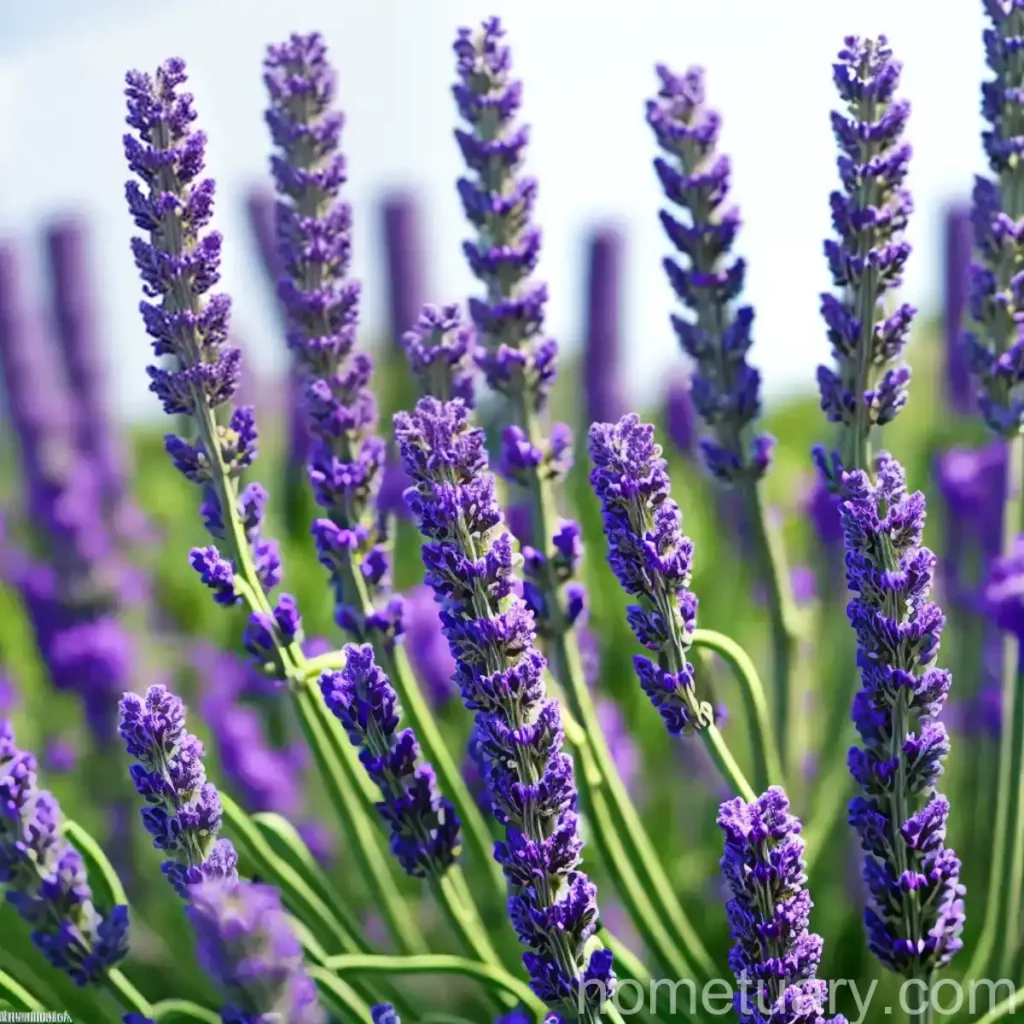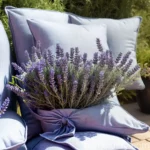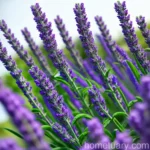Plant Scientist’s Guide to Lavandin (Lavandula x intermedia ‘Fred Boutin’)
Lavandula x intermedia ‘Fred Boutin’, commonly known as lavandin, is a hybrid lavender plant that has gained popularity among gardeners and landscapers for its stunning flowers and aromatic properties. In this comprehensive guide, we will delve into the culture, uses, care, and propagation of lavandin, along with tips from botanists and interesting facts about this beautiful plant.
What is Lavandin (Lavandula x intermedia ‘Fred Boutin’)?
Lavandin, scientifically known as Lavandula x intermedia ‘Fred Boutin’, is a hybrid lavender plant that belongs to the Lamiaceae family. It is a cross between true lavender (Lavandula angustifolia) and spike lavender (Lavandula latifolia). This hybridization has resulted in a plant with unique characteristics that make it desirable for both ornamental and practical purposes.
Key Takeaways – Lavandin (Lavandula x intermedia ‘Fred Boutin’)
- Lavandin, also known as Lavandula x intermedia ‘Fred Boutin’, is a hybrid lavender plant with captivating flowers and a delightful fragrance.
- It is valued for its ornamental uses in gardens and landscaping, as well as for its essential oil production and medicinal properties.
- Cultivating lavandin requires attention to its water, sunlight, fertilizer, soil, and pruning needs, along with proper propagation and container care.
- Common diseases and pests that may affect lavandin should be identified early for effective management and plant health maintenance.
- Botanists’ tips and fun facts about lavandin provide valuable insights and interesting tidbits for enthusiasts and horticulturists alike.
Culture
Cultivating lavandin requires an understanding of its specific cultural requirements to ensure optimal growth and vigor. From suitable growing conditions to maintenance practices, the culture of lavandin encompasses various aspects that contribute to its overall well-being.
Uses
Lavandin is a versatile plant with a wide range of uses, making it a popular choice for diverse applications. Its uses include:
- Ornamental purposes: Lavandin’s attractive flowers and aromatic foliage make it an excellent choice for ornamental planting in gardens, borders, and decorative containers.
- Aromatic resource: The flowers of lavandin are used in the production of lavender essential oil, which is utilized in aromatherapy, perfumery, and various personal care products.
- Medicinal properties: Lavandin essential oil is known for its potential therapeutic benefits, including its calming and relaxing effects, making it valuable in natural and alternative medicine.
Water
Proper irrigation is essential for the healthy growth of lavandin. While lavandin is known for its tolerance to drought conditions, adequate moisture is crucial, especially during its initial establishment and flowering stages.
Lavandin’s water needs are influenced by factors such as:
- Soil type: Well-draining soils help prevent waterlogging, which can be detrimental to lavandin. Sandy or loamy soils with good drainage are ideal.
- Climate: In hot and dry climates, regular watering is necessary to support lavandin’s growth, while in cooler regions, less frequent watering may be sufficient.
Sunlight
Lavandin thrives in full sunlight, requiring at least 6 to 8 hours of direct sun exposure daily. When provided with ample sunlight, it promotes robust growth, enhances flower production, and intensifies the fragrance of its blooms.
Fertilizer
Fertilizing lavandin can contribute to its overall health and blooming capacity. A balanced fertilizer with slightly higher phosphorus content can support flower development and enhance the plant’s vitality.
Key considerations for fertilizing lavandin include:
- Application time: Fertilize lavandin in early spring before the onset of its active growth period to provide it with essential nutrients for the growing season.
- Avoid over-fertilization: Excessive fertilizer application may lead to excessive vegetative growth at the expense of flower production, so it is important to follow recommended guidelines.
Soil
Lavandin thrives in well-draining, alkaline soils that are rich in organic matter. Soil pH levels between 6.7 and 7.3 are considered optimal for lavandin cultivation, ensuring the availability of essential nutrients and promoting strong root development.
Pruning
Pruning lavandin is essential for maintaining its shape, promoting bushy growth, and encouraging prolific flowering. Proper pruning practices also help reduce the risk of disease and pest infestations by enhancing air circulation and sunlight exposure within the plant canopy.
When it comes to lavandin pruning:
- Timing: Prune lavandin after its flowering period, typically in late summer or early fall, to remove spent blooms and shape the plant.
- Pruning techniques: Use sterilized pruning shears to trim the stems back by about one-third to maintain a compact and tidy appearance.
Propagation
Propagating lavandin allows for the creation of new plants from existing ones, enabling gardeners to expand their lavandin collection or share their favorite cultivars with others. Propagation methods for lavandin include:
- Stem cuttings: Take 4- to 6-inch stem cuttings from healthy, non-flowering shoots in early to mid-summer, and root them in a well-draining propagation medium.
- Division: Divide mature lavandin plants in early spring, carefully separating the root ball into smaller sections with healthy shoots for individual planting.
Container Popularity
Lavandin’s suitability for container growing has made it a popular choice for enthusiasts with limited garden space or those interested in creating portable displays of aromatic and visually appealing plants. Its beautiful flowers and fragrant foliage make it an excellent container plant, whether grown individually or as part of mixed plantings.
Container Common Diseases
While lavandin is generally resilient, container-grown plants may be susceptible to certain diseases, including:
- Root rot: Overwatering or poorly draining containers can lead to root rot, a fungal disease that affects the plant’s root system and overall health.
- Powdery mildew: Humid conditions and poor air circulation in containers can promote the development of powdery mildew on lavandin’s foliage, leading to a white powdery coating and potential leaf distortion.
Disease Diagnosis
Monitoring the health of lavandin in containers is essential for early disease detection and prompt intervention. Symptoms of common diseases may include wilting, yellowing leaves, or unusual fungal growth, indicating the need for further diagnosis and appropriate management measures.
Common Pests
Lavandin may encounter various pests that can affect its growth and vigor. Common pests that may infest lavandin plants include:
- Aphids: These small, soft-bodied insects feed on the plant’s sap, often causing distorted growth and honeydew deposition on the foliage.
- Spider mites: These tiny arachnids can cause stippling and discoloration of lavandin’s leaves, leading to reduced photosynthetic capacity and overall plant decline.
Detecting pest infestations early and implementing suitable control methods is crucial for preserving the health and appearance of lavandin plants.
Botanist’s Tips
Insights from botanists and horticulturists can offer valuable guidance for cultivating, caring for, and appreciating lavandin. Here are some expert tips to enhance the success of growing lavandin:
- Prune strategically: Regular pruning not only maintains lavandin’s shape but also promotes the development of new growth and ensures abundant flowering in subsequent seasons.
- Promote air circulation: Good air circulation around lavandin plants reduces the risk of disease by minimizing humidity and preventing fungal infections.
- Harvest lavender blooms: Regularly harvesting lavender blooms at their peak encourages continued flowering and ensures a fresh supply of fragrant flowers for various uses.
Fun Facts
- Lavandin, particularly the ‘Fred Boutin’ variety, is known for its robust growth habit and high oil content, making it a preferred choice for lavender farming and essential oil production.
- The aromatic compounds found in lavandin have been studied for their potential antimicrobial and insect-repellent properties, adding to its practical uses beyond its ornamental value.
Links to External Resources
For further information on lavandin (Lavandula x intermedia ‘Fred Boutin’), essential oil production, and lavender cultivation, explore the following resources:
In conclusion, lavandin (Lavandula x intermedia ‘Fred Boutin’) stands out as a captivating plant with a rich history and a multitude of practical and ornamental uses. As you explore the world of lavandin cultivation and appreciation, may the insights shared in this comprehensive guide enhance your journey in fostering and enjoying the beauty of this remarkable hybrid lavender plant.
Remember to revel in the aromatic splendor of lavandin, and may its lush blooms and soothing fragrance bring joy and inspiration to your botanical pursuits and sensory experiences.
Happy gardening!
References
- Simon, J.E., Sen, A., Woolley, C.L., et al. “Lavender: The Genus Lavandula.” Medicinal and Aromatic Plants – Industrial Profiles, 2002.
- Lis-Balchin, M. “Lavender: The Genus Lavandula.” Medicinal and Aromatic Plants – Industrial Profiles, 2002.
- Harborne, J.B., Baxter, H. “Chemical Dictionary of Economic Plants.” John Wiley & Sons, 2001.















